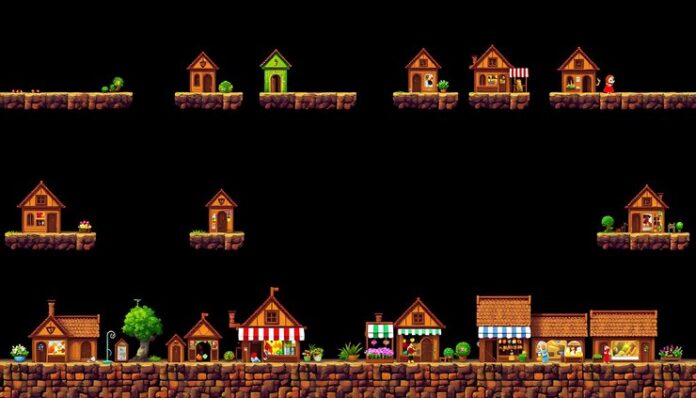Extracting sprites from FM Towns, extract sprites from fm towns an iconic laptop and console gadget developed with the aid of Fujitsu, can seem like a daunting assignment for the ones unexpected with the system. FM Towns became known for its high-quality photo skills, particularly for its time, making Sprite extraction a treasured talent for game enthusiasts, unfashionable enthusiasts, and builders alike. This guide covers all the essential steps to correctly extract sprites from FM Towns.
Understanding FM Towns Graphics

FM Towns applied a unique image gadget that set it apart from other consoles and computers in the course of its technology. The mixture of excessive coloration intensity and advanced audio made it a sought-after platform for game enthusiasts. However, extracting sprites from FM Towns is not as sincere as modern-day systems. Here’s why:
- Proprietary Graphics Formats: FM Towns used custom photo formats, which require unique software programs to decode.
- Layered Graphics: Many games on FM Towns have multi-layered backgrounds and sprites, making manual extraction elaborate.
- Limited Documentation: Resources on extracting sprites from FM Towns are scarce, including any other layer of complexity.
Tools You Need to Extract Sprites from FM Towns
Before you can start the system of sprite extraction, it’s essential to acquire the right tools. Here’s a list of software that assist you to extract sprites from FM Towns successfully:
- TileMolester: This open-source software allows customers to view and extract tiles and sprites from a number of retro systems, along with FM Towns.
- GIMP or Photoshop: Image enhancing software program is essential for cleaning up and great-tuning the extracted sprites.
- FM Towns Emulator (Unz or Tsugaru): An emulator is vital to run FM Towns games and view the sprites in their native environment.
- HxD Hex Editor: This tool allows you to locate the sprite records in ROM documents.
Step-with the aid of-Step Guide to Extract Sprites from FM Towns
- Setting Up the Emulator
To start the extraction technique, you first want to set up an FM Towns emulator. We propose the usage of Unz or Tsugaru, both of which are first-rate alternatives for walking FM Towns games. After installing your selected emulator:
- Load the ROM of the sport from which you need to extract sprites.
- Play via the game till you attain the location wherein the sprites you need are seen.
- Capturing the Sprites
There are number one methods to extract sprites from FM Towns: taking pictures of them at once through gameplay or locating them in the sport’s ROM documents.
Method 1: Direct Capture
- Pause the game at the point where the sprite you need to extract is seen.
- Take a screenshot of the emulator’s screenshot function.
- Open the screenshot in an image editor like GIMP or Photoshop.
- Use the lasso or selection tool to isolate the sprite from the historical past, then keep it as a separate record.
Method 2: ROM File Extraction
For more complex sprites or if you want access to all the sprite documents in a recreation, you’ll need to extract them directly from the ROM.
- Open the game’s ROM in TileMolester.
- Scroll through the pics till you find the sprites.
- Once positioned, you may export the sprites immediately from the software program and save them as picture files for later use.
- Be aware that the sprites may also need some enhancement once extracted, mainly if they are stored in multiple layers or are partially transparent.
- Editing the Extracted Sprites
Once you’ve efficaciously extracted sprites from FM Towns, the subsequent step is to ease them up. Follow these pointers to ensure your sprites are crisp and geared up for use:
- Remove Backgrounds: Use a magic wand or choice device to get rid of any remaining history factors. FM Towns sprites frequently come with black or transparent backgrounds, so make sure to test for artifacts.
- Refine Edges: Sprites may also have jagged or choppy edges while extracted, specifically if they have been first designed for low-decision presentations. Use the smoothing or anti-aliasing gear in GIMP or Photoshop to refine the sprite edges.
- Color Correction: FM Towns had unique shade palettes. If vital, alter the colors to make sure they fit the unique recreation’s snapshots.
Common Challenges in FM Towns Sprite Extraction
Despite your quality efforts, you could encounter some demanding situations while attempting to extract sprites from FM Towns. Here’s the way to cope with the most commonplace problems:
- Layered Graphics: As previously noted, FM Towns video games frequently use layered pics. If your sprite appears incomplete or messy, it is possible due to the fact that you’re simplest seeing one layer. Use TileMolester to split and extract each layer personally.
- Corrupted Sprites: Some ROMs may have corrupted sprite information, making extraction challenging. If you encounter this, strive to use a specific ROM record or patch the ROM if you need to.
- Transparency Issues: Many FM Towns sprites rely on transparency, specifically for shadows and outcomes. Be sure to test for transparency while cleansing up your sprites, and practice transparent layers where necessary.
Uses for Extracted Sprites
Extracting sprites from FM Towns is a precious talent for a variety of initiatives. Here are some common ways you can use those sprites:
- Game Development: Retro sprites are often used in modern-day indie recreation development, both for fan-made tasks or as thought for unique video games.
- Mods and Hacks: FM Towns sprites may be used to create mods or hacks for other unfashionable video games, adding new characters, backgrounds, or results.
- Art and Animation: Retro sprite art is tremendously preferred with the aid of digital artists and animators, who often use those sprites as a basis for pixel artwork or animations.
- Archival and Preservation: Extracting sprites is likewise a shape of digital protection, making sure that the specific visible history of FM Towns games is maintained for future generations.
Conclusion
Learning a way to extract sprites from FM Towns calls for persistence, the proper equipment, and a bit of technical understanding, but the outcomes are properly well worth the attempt. Whether you’re a retro gaming enthusiast or a game developer, extracting these precise and nostalgic sprites can open up a world of creative opportunities.


